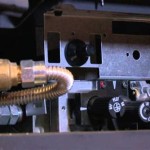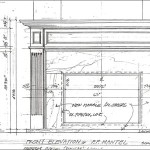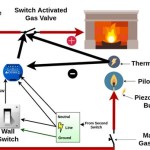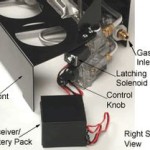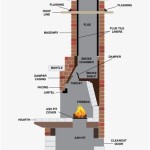Parts of a Fireplace Surround
A fireplace surround is the decorative frame that encloses a fireplace, enhancing its aesthetic appeal while also providing protection to the surrounding wall from heat and soot. Fireplace surrounds come in various shapes, sizes, and materials, offering a wide range of design possibilities to complement any home decor. Understanding the different parts of a fireplace surround can help you choose the right one for your home and also aid in the installation process.
Hearth
The hearth is the flat, horizontal surface in front of the fireplace where you place your firewood, embers, or other fire-related items. It is typically made of stone, brick, or tile and extends outwards from the fireplace opening. The hearth serves several important functions. It provides a stable platform for the fire, prevents sparks from escaping and damaging the floor, and acts as a barrier between the fire and the surrounding area. The hearth can also be a focal point for decorating the fireplace area, offering a space for decorative items like baskets, logs, or candles.
Mantel
The mantel is the horizontal shelf that sits above the fireplace opening. It's a popular spot for displaying decorative items, artwork, or family photos. Mantels can be made of various materials, including wood, stone, metal, or even concrete. The style of the mantel can significantly impact the overall look of the fireplace surround. Simple, minimalist mantels can create a modern aesthetic, while ornate, carved mantels can add a touch of traditional elegance.
Jambs
The jambs are the vertical sides that frame the fireplace opening. They extend upward from the hearth, providing a supportive structure for the mantel. Jambs are often made of the same material as the mantel and hearth, creating a cohesive look for the fireplace surround. However, they can also be made of different materials to create contrasting elements and visual interest. The jambs often feature decorative elements like molding or trim to enhance the aesthetic appeal of the fireplace surround.
Lintel
The lintel is the horizontal piece of material that sits above the fireplace opening and supports the weight of the mantel. It is usually hidden behind the mantel but plays a crucial role in the structural integrity of the fireplace surround. The lintel can be made of various materials, such as stone, steel, or timber, depending on the size and weight of the mantel and the surrounding structure.
Surround
The surround refers to the entire decorative frame that encloses the fireplace opening. It includes the hearth, jambs, mantel, and lintel. The surround acts as a visual focal point, enhancing the aesthetic appeal of the fireplace and framing the fire. The surround can be a simple, understated design or an intricate, elaborate work of art. Choosing the right surround material and design is a matter of personal preference and can significantly impact the overall look and feel of the room.
Other Components
In addition to these main parts, fireplace surrounds can also include other components, such as:
Fireplace Screen: A screen that sits in front of the fireplace opening, preventing sparks from escaping and providing a decorative element.
Fireplace Tools: Tools such as tongs, shovels, and pokers, traditionally stored on a stand or hung near the fireplace for easy access.
Firebox: The firebox is the interior chamber of the fireplace where the fire burns. It is typically made of brick or metal and lined with firebrick or refractory mortar to withstand high temperatures. The firebox is an integral part of the fireplace, but it is not typically considered part of the fireplace surround as it is not visible.
Damper: The damper is a device that regulates the flow of air into the firebox. It is located in the back of the firebox and can be opened or closed to control the intensity of the fire. The damper is an important safety feature, as it prevents smoke and fumes from filling the room when the fireplace is not in use.
Chimney: The chimney is the vertical structure that extends from the firebox to the roof. It is responsible for venting smoke and gases produced by the fire. The chimney must be properly sized and maintained to ensure safe and efficient operation of the fireplace.
Understanding the different parts of a fireplace surround can help you choose the right design and materials for your home, making it a functional and aesthetically pleasing addition to your space.

Fireplace Anatomy

Pin Page

Get Fired Up Transform Your Fireplace Home Square Pro

Getting To Know Your Fireplace Waterloo Kitchener Fireplaces Custom Cabinetry

How To Update The Look Of Your Fireplace

Fireplace Mantel Surround Designs

Is A Masonry Fireplace Right For Your Home Hometips

Parts Of A Fireplace Chimney Explained With Diagrams And Real S

Understanding The Anatomy Of A Fireplace Madewell Masonry

Parts Of A Gas Fireplace Explained With Real Examples
Related Posts


